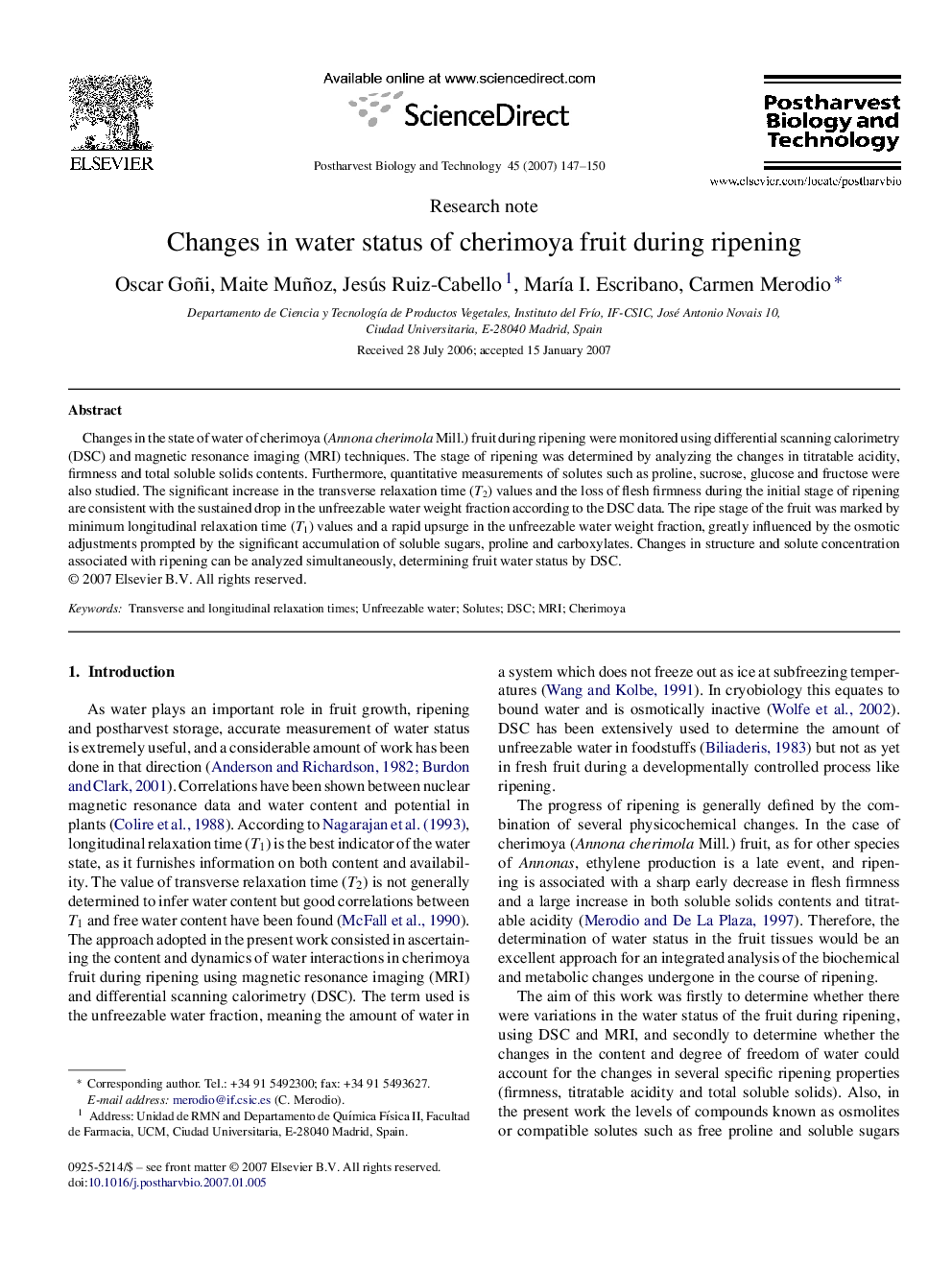| Article ID | Journal | Published Year | Pages | File Type |
|---|---|---|---|---|
| 4519776 | Postharvest Biology and Technology | 2007 | 4 Pages |
Abstract
Changes in the state of water of cherimoya (Annona cherimola Mill.) fruit during ripening were monitored using differential scanning calorimetry (DSC) and magnetic resonance imaging (MRI) techniques. The stage of ripening was determined by analyzing the changes in titratable acidity, firmness and total soluble solids contents. Furthermore, quantitative measurements of solutes such as proline, sucrose, glucose and fructose were also studied. The significant increase in the transverse relaxation time (T2) values and the loss of flesh firmness during the initial stage of ripening are consistent with the sustained drop in the unfreezable water weight fraction according to the DSC data. The ripe stage of the fruit was marked by minimum longitudinal relaxation time (T1) values and a rapid upsurge in the unfreezable water weight fraction, greatly influenced by the osmotic adjustments prompted by the significant accumulation of soluble sugars, proline and carboxylates. Changes in structure and solute concentration associated with ripening can be analyzed simultaneously, determining fruit water status by DSC.
Related Topics
Life Sciences
Agricultural and Biological Sciences
Agronomy and Crop Science
Authors
Oscar Goñi, Maite Muñoz, Jesús Ruiz-Cabello, MarÃa I. Escribano, Carmen Merodio,
